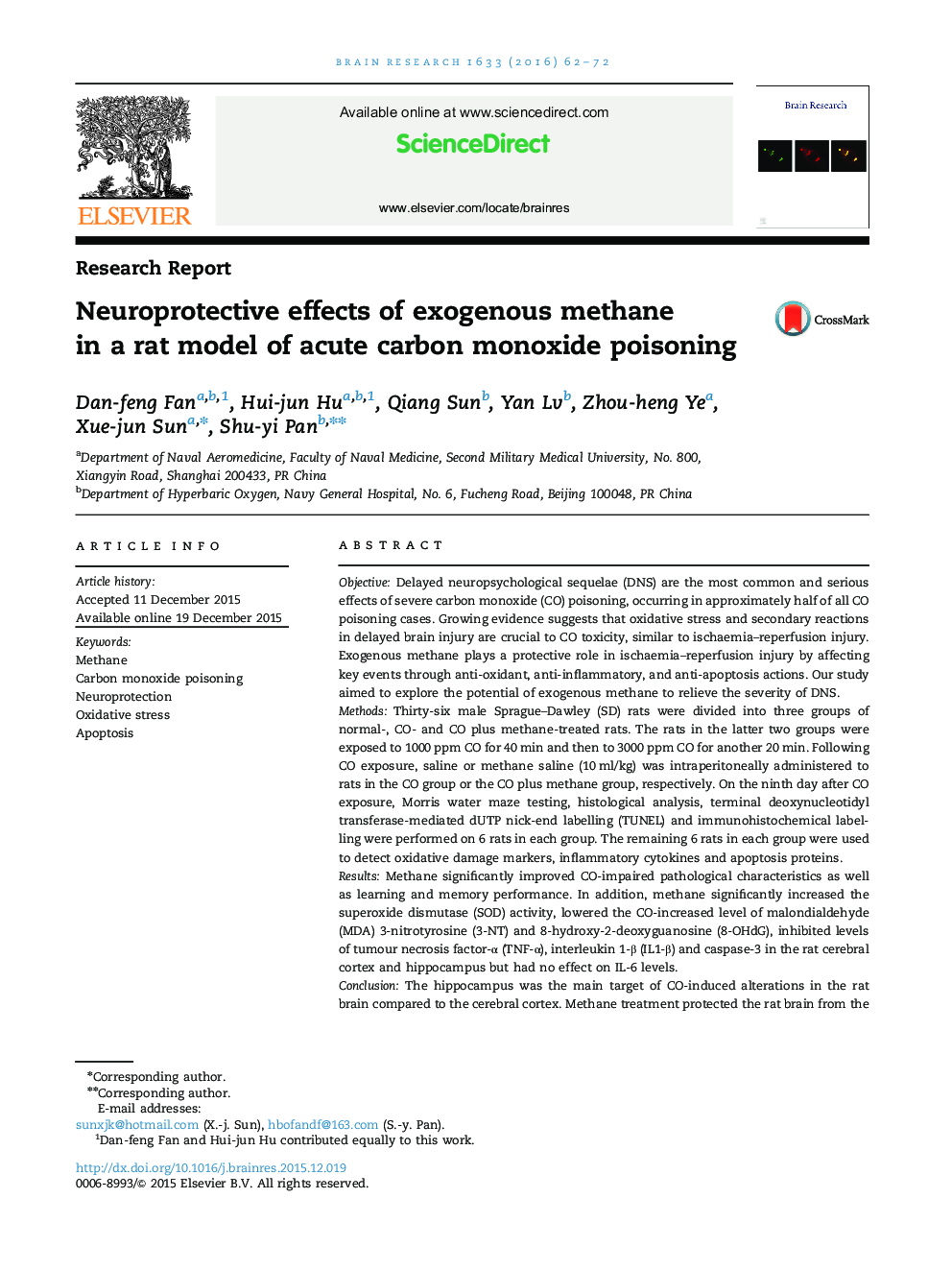| کد مقاله | کد نشریه | سال انتشار | مقاله انگلیسی | نسخه تمام متن |
|---|---|---|---|---|
| 4323722 | 1613807 | 2016 | 11 صفحه PDF | دانلود رایگان |
• Methane had a significant protective effect on brain injury induced by acute CO poisoning.
• Methane had the abilities of anti-oxidant, anti-inflammatory and anti-apoptosis to protective the injury due to CO poisoning.
• The hippocampus, compared to the cerebral cortex, was the main targeted area of brain damage caused by CO poisoning.
ObjectiveDelayed neuropsychological sequelae (DNS) are the most common and serious effects of severe carbon monoxide (CO) poisoning, occurring in approximately half of all CO poisoning cases. Growing evidence suggests that oxidative stress and secondary reactions in delayed brain injury are crucial to CO toxicity, similar to ischaemia–reperfusion injury. Exogenous methane plays a protective role in ischaemia–reperfusion injury by affecting key events through anti-oxidant, anti-inflammatory, and anti-apoptosis actions. Our study aimed to explore the potential of exogenous methane to relieve the severity of DNS.MethodsThirty-six male Sprague–Dawley (SD) rats were divided into three groups of normal-, CO- and CO plus methane-treated rats. The rats in the latter two groups were exposed to 1000 ppm CO for 40 min and then to 3000 ppm CO for another 20 min. Following CO exposure, saline or methane saline (10 ml/kg) was intraperitoneally administered to rats in the CO group or the CO plus methane group, respectively. On the ninth day after CO exposure, Morris water maze testing, histological analysis, terminal deoxynucleotidyl transferase-mediated dUTP nick-end labelling (TUNEL) and immunohistochemical labelling were performed on 6 rats in each group. The remaining 6 rats in each group were used to detect oxidative damage markers, inflammatory cytokines and apoptosis proteins.ResultsMethane significantly improved CO-impaired pathological characteristics as well as learning and memory performance. In addition, methane significantly increased the superoxide dismutase (SOD) activity, lowered the CO-increased level of malondialdehyde (MDA) 3-nitrotyrosine (3-NT) and 8-hydroxy-2-deoxyguanosine (8-OHdG), inhibited levels of tumour necrosis factor-α (TNF-α), interleukin 1-β (IL1-β) and caspase-3 in the rat cerebral cortex and hippocampus but had no effect on IL-6 levels.ConclusionThe hippocampus was the main target of CO-induced alterations in the rat brain compared to the cerebral cortex. Methane treatment protected the rat brain from the harmful effects induced by CO exposure and improved the outcome of DNS through anti-oxidant, anti-inflammatory and anti-apoptosis activities.
Journal: Brain Research - Volume 1633, 15 February 2016, Pages 62–72
